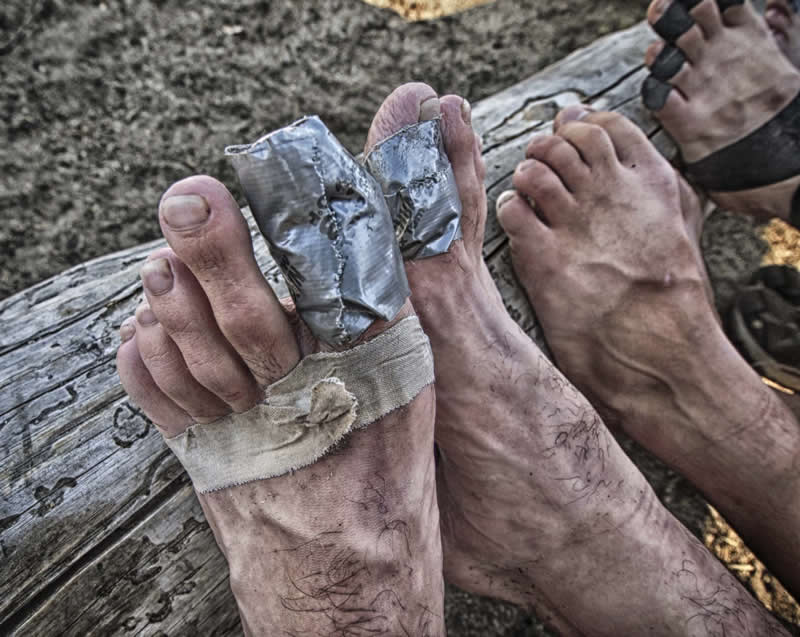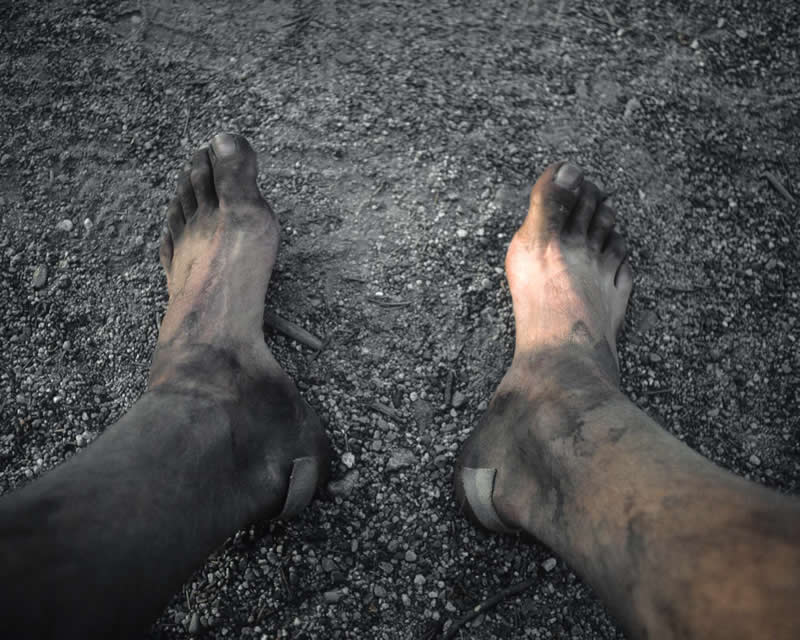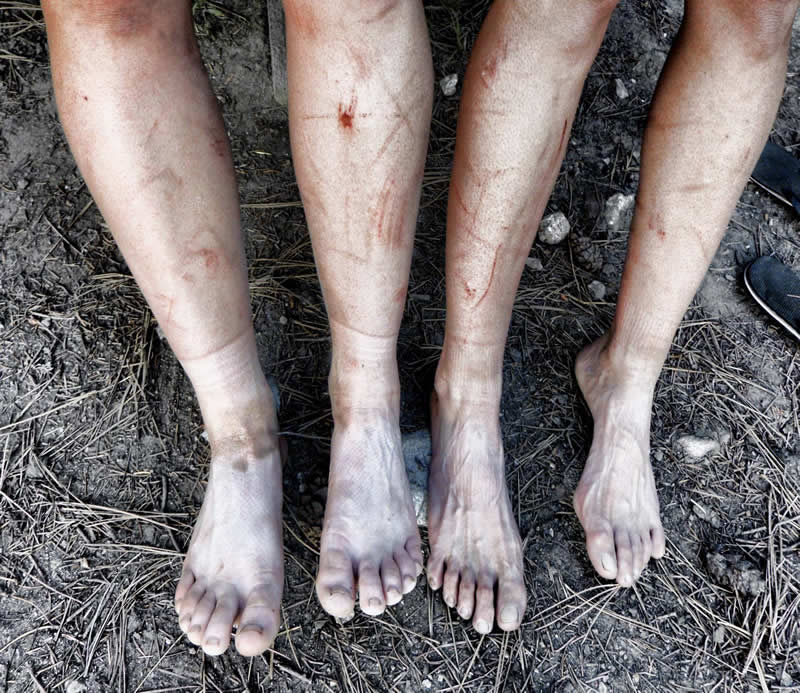Read Part 1 of this article here.
The first sign of a blister is usually the 'hot spot'. On exam, the hot spot is typically an area of slight pain and redness, often without any visible blister formation. It should be addressed early, as left unchecked the hot spot soon becomes a blister. Remove the shoe and let the skin dry. Alcohol prep pads are useful to scrub the affected area and surrounding tissue. The alcohol will dissolve the oils on the skin and leave a temporarily super dry surface for the next step. Now then, what kind of tape or skin dressing to use...

There are lots of options out there, everything from traditional adhesive tapes to liquid bandages, not to mention a whole line of blister-related products. Duct© tape and Gorilla© tape have worked well for some - their shiny surfaces slip against the sock and shoe, and reduce some of the friction. However, they require extremely dry feet and a considerable amount surgical cuts and rounded corners. Once the foot gets moist again, the tape is likely to peel off, requiring frequent re-applications. Moleskin© is another traditional standard, but it is rather thick, and often works better as a way to build up layers around an open blister to decrease direct pressure on the tender skin.
Kinesiology tape is the newest development in athletic taping. Originally created in the 1970's, it is now used by athletes in all sports. Even though a dozen sports medicine research articles over the past 10 years have concluded that reduction in pain or injury from the use of this tape is limited, it is still an important development for foot repair. The smooth texture, flexibility, and holding power under the duress of moisture make it a nice option for treating blisters on the feet. Strength Tape© seems to stick the best under the worst conditions, and it was recently endorsed by the foot care specialist for the 2013 Amazon Jungle Marathon. There are, however, a few tricks to get the best application.
I will use a common heel blister as an example - one that has either been deflated of its fluid, or is only a hotspot. First, round all the corners of the tape with a pair of scissors. Secondly, prep the foot with an alcohol scrub and let dry completely. This takes a bit of time, but it is well worth the wait. Next, with the ankle at 90 degrees, apply the tape under the heel first, without any stretch on it, and slowly peel off the backing as you wrap it up the Achilles tendon. Each end of the tape should not be stretched, but the middle can have about a 50 percent stretch on it. Now rub the tape from center out for about 30 seconds to create a smooth form-fitted strip, free of wrinkles (all kinesiology tape has heat-activated adhesive). It works best to place the tape in a vertical orientation, rather than wrapped laterally around the heel, as the frictional forces are usually in an up/down direction.

Hypafix© is medical dressing retention tape that is often used in the Emergency Department. It is very flexible, breathes, and sticks to any curvature. This tape, if applied after an alcohol scrub, will potentially remain in place for days. It can be used to hold a doughnut or strip of Moleskin© in place over a blistered prominence.
New Skin© is a liquid bandage product that is painted on, dries slowly, and forms a semi-pliable coating over the wound. It works sufficiently well on fingers, but in the moisture-prone darkness of the sweating foot, it usually wears off in just a few hours. Tincture of Benzoin is an alcohol product that, when applied to the skin, makes it sticky and dry. Applying benzoin to the skin before taping does seem to work, but it has highly variable results within the humidity of a human shoe.
If the blister is large and filled with fluid, it needs to be drained. Wipe off a needle or sharp knife with an alcohol pad and gently puncture the blister at 4 o'clock and 8 o'clock. The position of these holes will let gravity assist in the drain. Squeeze out the fluid until the blister roof is wrinkly, pale, and soft again. Dry the feet, do the alcohol scrub, apply the tape, put on a fresh set of socks, put the shoe back on, and lace to tension. The blister may regain its volume over time and soak the lower segment of tape, but it can be dealt with again in the same manner later. One important note: the opened blister now contains a portal for infection and so vigilance should be maintained to watch for that complication.

Maintaining momentum in the backcountry is always important, and to deal with any foot related injury means short days and limited miles. The preference is always avoidance, but if injury should arise, it is best to have the basic skills of field repair, and a tiny stash of tape and materials that can keep you moving.
Posted on May 12, 2015